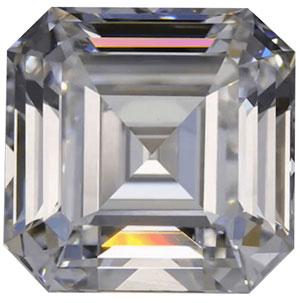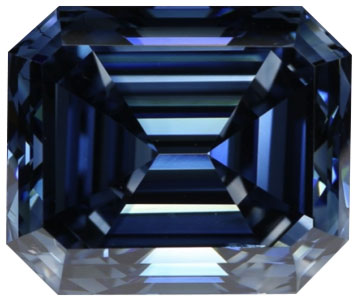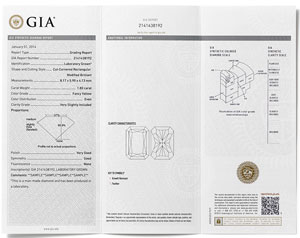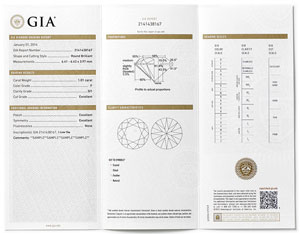Growing Bigger & Bigger Diamonds
Gem-quality lab-grown diamonds have been around for decades, in a large variety of colors, but they were not large stones. Usually they were from 1 to 3 carats.
Now things are suddenly changing, AND FAST.
Last year New Diamond Technology (NDT), a Russia-based company, startled the industry with a 10.02 colorless diamond. This year it followed up with a 10.2 carat blue diamond. One industry journal called that big blue "freakishly large."
"Freakish" – or the Future?
These big diamonds might be viewed as freakish partly because until recently diamond growers have generally turned out colored diamonds of 1 to 3 carats. Richly colored diamonds are extremely rare in nature, but labs made them, at least the small ones, rather easily. NDT's jump to 10 carats was a major breakthrough.
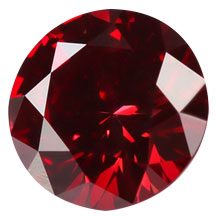 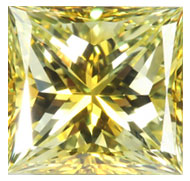  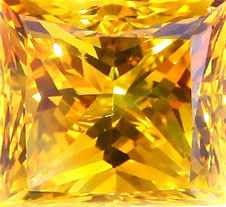 Small-size lab-grown diamonds in a variety of colors |
The company claims it can produce finished diamonds of 15 and 20 carats, and that even a 100-carat diamond is within reach. But, says the director, "I think the world is not ready for them yet."
The unspoken factor in this deferment is economic. Such large stones take much longer to produce, and the energy required makes them cost prohibitive.
Currently there isn't much of a market for diamonds this size and price. The diamond in the average engagement ring, for example, hovers around 1 carat, admittedly because of the price.
Price depends to some extent on supply. The supply of high-quality mined diamonds, especially large diamonds, is limited and is dwindling. But for lab-made gems it's just the opposite. As technology continues to advance, more companies will be producing more diamonds in larger sizes.
It's worth noting that a 10-carat diamond, while huge for current growers to produce, is not all that large. It would not be ostentatious to wear jewelry with a 10 carat diamond. The existence of such diamonds at reasonable prices may well create the market for them.
What is such a large diamond worth?
In general, the value of lab-grown diamonds is significantly lower than mined diamonds of similar quality. It's now about 30% lower, and growers would like to get that down to 40-50% lower. Similar ratios are likely to apply to large (and super-large!) lab-grown diamonds.
NDT could not put a price tag on its 10-caret diamond because the production cost was extremely high. The company used the HPHT (high pressure high temperature) method followed by many other manufacturers, but with several patented steps along the way.
A smaller, 5.03 carat, blue diamond the company produced earlier this year sold for $250,000 to a retailer, who in turn sold it to a buyer for an undisclosed amount. The director of NDT asserted that an (untreated) mined diamond would likely fetch millions.
Risk of Fraud
Here's the rub: How do you know whether a diamond is mined or lab-grown?
Just this month, GIA's Hong Kong lab received for grading a 5.19-carat colorless diamond. It was not presented as man-made, but GIA is one of very few grading labs with the equipment needed to determine that it was indeed made in a lab.
Perhaps the gem's manufacturer was testing to see whether the gem's lab origin could be detected, perhaps the manufacturer hoped the gem would slip through as a mined diamond.
The name of the maker was not immediately known, but this incident suggests that more diamond-growing labs are at or near breaking the size barrier for colorless and fancy colored diamonds.
It is increasingly important for the insurer to have assurance, on the appraisal and lab report, that the diamond is either mined or lab-grown.
FOR AGENTS & UNDERWRITERS
Lab-grown diamonds are true diamonds, manufactured in a lab from the same material as diamonds mined from the earth. Man-made diamonds have the same hardness and brilliance of mined diamonds and all the same physical, chemical and optical properties — but are valued at a significantly lower price.
In insuring colored diamond, or any diamond of high value, never assume the gem is mined (and therefore more valuable). Disclosure is crucial. Insist on an appraisal that states whether the stone is mined or lab-grown.
We don't use the word synthetic because it implies fake to most readers outside the diamond industry. But you may see synthetic on an appraisal, lab report, or other document. You may also see the terms grown, lab-made, man-made and cultured. They all describe a real gem (not a simulant or fake).
Gem-growing is a competitive field. Proprietary formulas and patented procedures make lab-grown gems increasingly difficult to detect. The expensive equipment needed to accurately identify lab-grown gems is beyond the reach of gemologists, including world class gemologists. We know for sure of only two grading labs that have the necessary equipment (though there may be a few others):
GIA
Gübelin
GIA tests every diamond to determine if it is mined or grown. If a diamond is found to be laboratory-grown, GIA issues a Synthetic Diamond Grading Report, which identifies the diamond as "Laboratory grown" and further comments: "This is a man-made diamond and has been produced in a laboratory."
Many consumers take the word synthetic to mean fake. Since GIA uses the phrase "synthetic diamond report", most diamond growers will not submit their stones to GIA for grading.
See Insuring Tips and Scam Update for more on insuring lab-made stones.
FOR ADJUSTERS
If diamond-growing follows the course of other technology-driven fields, once the development stage is over and larger quantities can be produced, costs will go down and prices will likely follow. For up-to-date valuation, consult an appraiser familiar with the pricing of man-made gems and the labs that create them.
As more lab-grown diamonds enter the market, so will fraud. With diamonds, the price differential between mined and lab-grown is significant. Mistaking a lab-made for a mined diamond could mean an overpayment of tens, if not hundreds, of thousands of dollars. For a deeper look at fraud involving lab-made diamonds, see Synthetics in the Mix.
Read carefully all documents on file. Do not assume that a gem is mined unless this is specifically stated on the appraisal.
The word synthetic has unpleasant associations for some buyers, so gem manufacturers may use other terms to describe their gems. Look over the appraisal and diamond report for such terms as created, grown, lab-made, man-made, lab-grown, and cultured.
Often lab-made diamonds are identified by the manufacturer's name, such as Gemesis or Chatham, so carefully inspect the appraisal and sales documents for any brand names. Recognizing these names, or working with a jewelry expert who does, could save you thousands of dollars on a claim.
For jewelry with fancy colored diamonds, a price that's "too good to be true" is a major red flag. Do insurance to value (ITV) calculations to check for a large discrepancy between purchase price and replacement cost.
Some major gem-growers are proud of their product and include disclosure information in their advertising and with each sale. Their name may also be inscribed on the girdle of the stone. However, disclosure information can be lost and an inscription may be hidden by the setting, so always seek a reliable appraisal and gem report.
Disclosure information can also get "lost." A customer may buy jewelry with lab-grown diamonds, not understanding the meaning of a term like cultured, for example, or not appreciating the extreme difference in value between mined and lab-made diamond. When he becomes aware that he made a bad purchase, he may "sell" it to the insurance company via a fraudulent claim.
©2000-2024, JCRS Inland Marine Solutions, Inc. All Rights Reserved. www.jcrs.com

